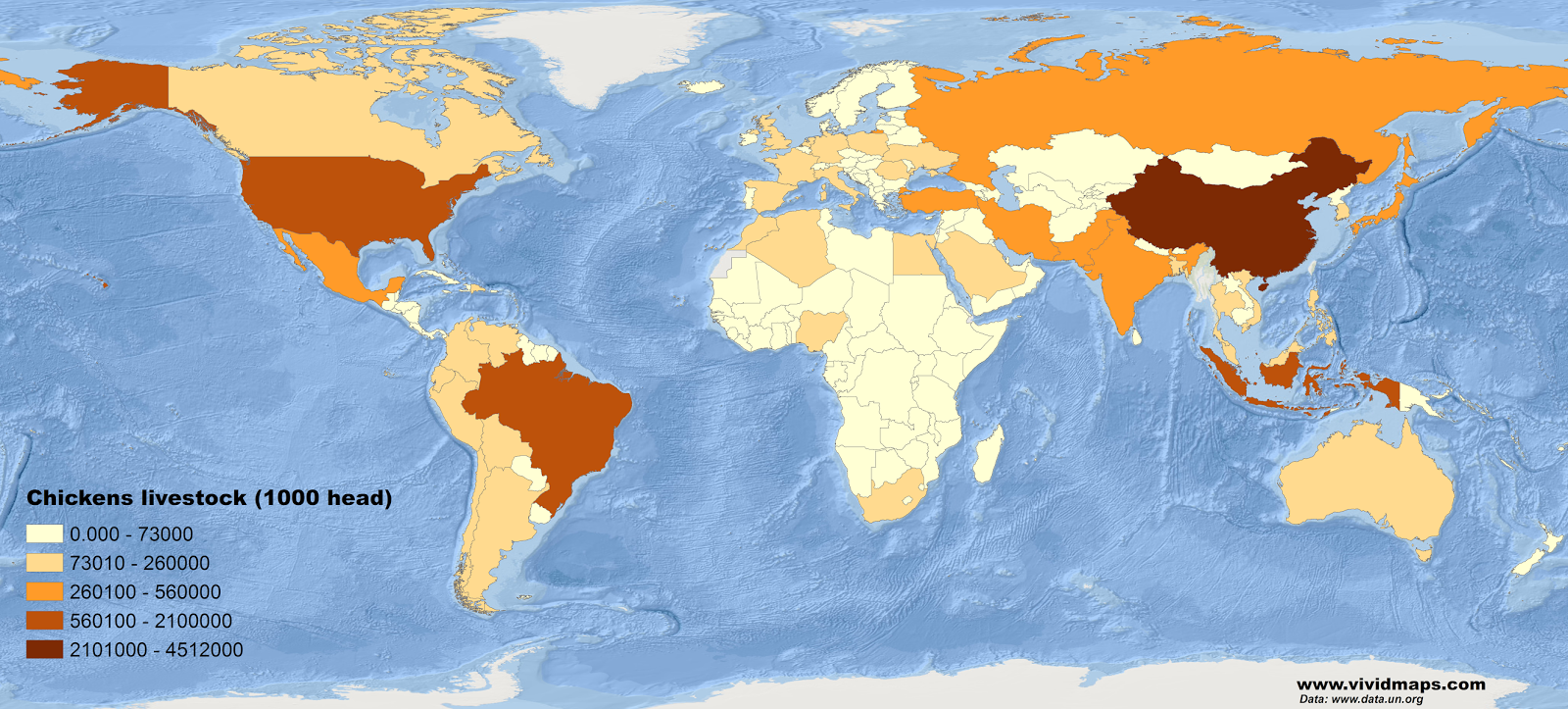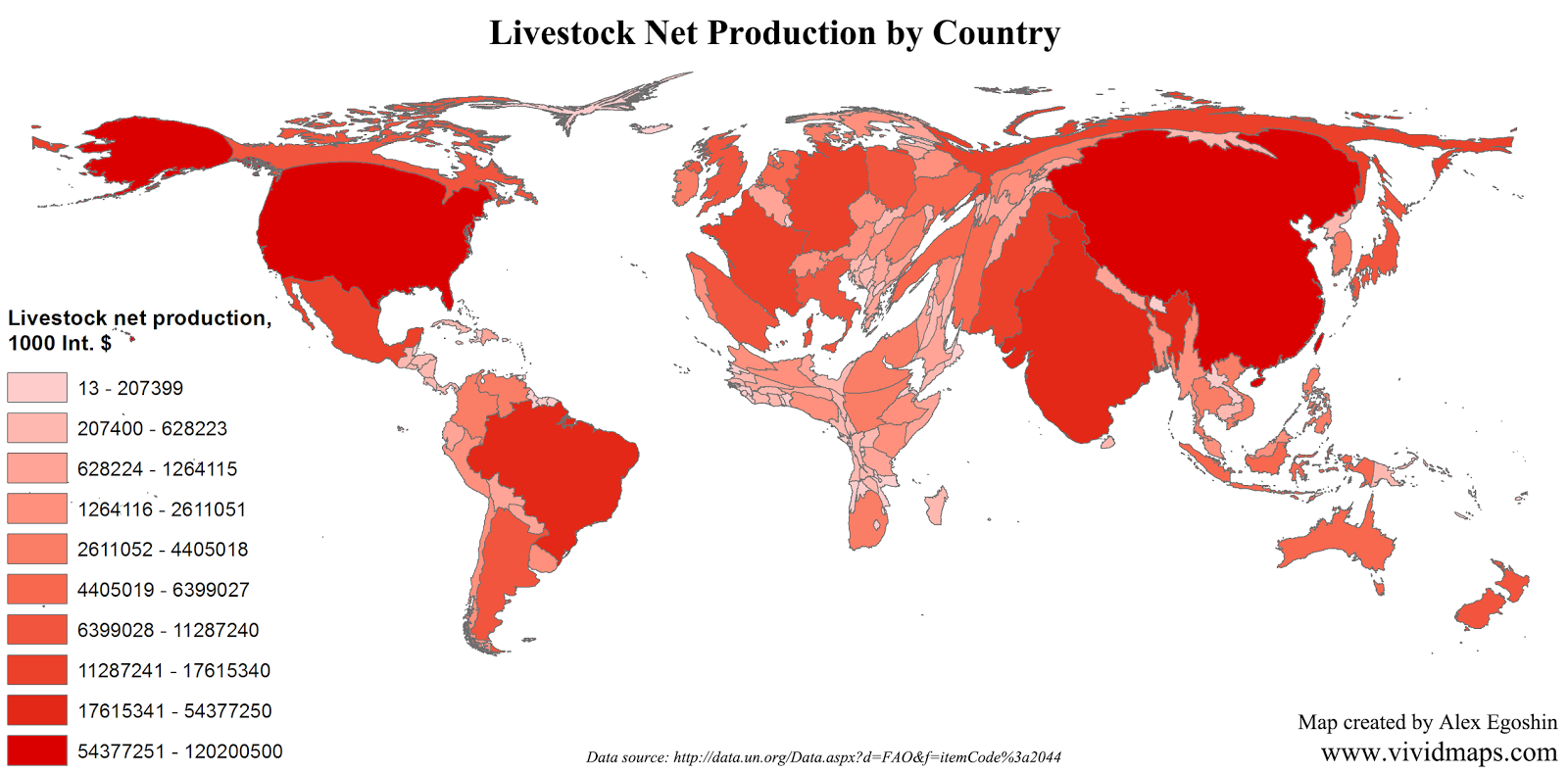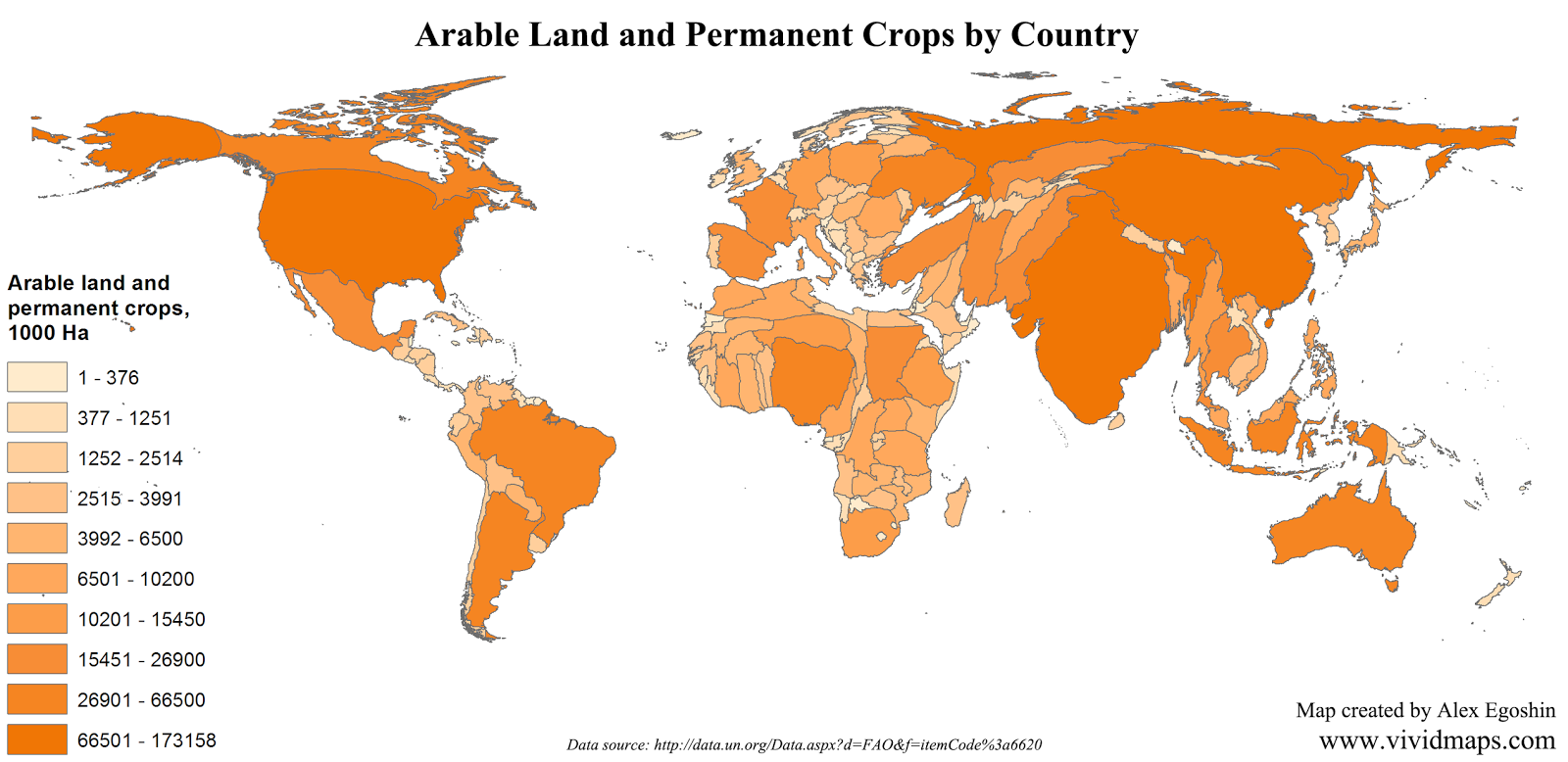Goats density map
Goat (Capra aegagrus hircus) is domesticated from the wild goat of Southwest Asia and Eastern Europe.
According to archaeological data, the earliest domestication happened in Iran 10 thousand years ago. Goats have been used for milk, meat, fur, and skins over much of the globe. There are about 1,100 different breeds in the world.
According to the FAO, about one billion goats are living in the world. The maps below created by Reddit user Symmy546 show where do the world’s 1 billion goats live.

Top 20 countries by goat population
- China – 138 million
- India – 125 million
- Pakistan – 55 million
- Bangladesh – 53 million
- Nigeria – 52 million
- Sudan – 43 million
- Ethiopia – 22 million
- Mongolia – 15 million
- Indonesia – 14 million
- Keny1 – 14 million
- Somalia – 13 million
- Niger – 12 million
- Burkina Faso – 11 million
- Mali – 10 million
- Brazil – 9 million
- Mexico – 9 million
- Yemen – 8 million
- Uganda – 8 million
- Nepal – 8 million
- Philippines – 7 million
10 Popular Goat Breeds
Alpine
This dairy breed appeared in the French Alps. They are producing the most milk (7.6 liters per day / 2 gallons per day).
La Mancha
La Mancha goats are born with tiny ears. They are excellent milkers, giving milk with high protein and butterfat.
Nubian
Nubian goats are effortlessly recognizable due to their large, floppy ears and raised muzzle. Although they do not provide as much milk per goat as other breeds, Nubian dairy is very high in fat content. Nubian breed is also raised for meat.
Saanen
Saanen goats are the biggest dairy goat breed and are second in milk giving after Alpine goats. These famous goats have white, short hair and straight ears.
Boer
Boer bred initially been from South Africa. Boers are now one of the top meat goat breeds in the United States.
Spanish
When the Spaniards came to the Americas in the sixteenth century, they carried goats with them. Spanish meat goats are great foragers and will get in a tree for the last leaf if they have to.
Kiko
This meat goat from New Zealand is simple to grow. The Kiko goat was formed in New Zealand by mixing feral goats with dairy goats in the 1980s.
Tennessee Fainting (Myotonic)
Myotonic is the unique goat breed autochthonous to the U.S. While they are categorized as meat goats, many landowners keep them for pets because of their humble nature. They come in a wide diversity of coat lengths and coat lengths.
Pygmy
An adult pygmy goat is nearly as large as a medium-sized dog, making these TINY goats perfect for acreages. While this breed does give milk, they are most often grown as pets.
Nigerian Dwarf
Nigerian Dwarfs are frequently risen for showing as well. Deb Miller had Nigerian Dwarf goats and said she produced nearly a one-liter (one quart) of milk per goat at every milking.
You can learn more about goat breeds here.
Goat milk
Goat milk is comparable to cow milk in its elemental composition. It comprises 4.1% lactose, 12.2% total solids, 3.8% fat, 3.5% protein, and 0.8% ash. Goat milk has more protein, fat, and ash, less lactose than cow milk, and 3 – 4 times more significant levels of protein and ash than human milk.
In low-income nations, goat milk is usually the single protein source in kid’s diets. In countries where most goats are seen, most goat keepers relate to the lower socioeconomic levels, and, in provincial territories, goats are managed mainly by women and kids.
The European goat sector practices milk production, mainly for industrial cheesemaking, while maintaining traditional on-farm production.
Goat meat
Goat meat has the following chemical composition (percentage):
- moisture (74.2 – 76.0)
- protein (20.6 – 22.3)
- fat (0.6 – 2.6)
- ash (1.1).
Goat meat includes more leucine, arginine, and isoleucine than lamb and is satisfactory in all the necessary amino acids. Goat meat also has a comparatively lower fat because the tissue is more concentrated in the internal organs. Goat meat is lower in cholesterol and fat as opposed to pork, beef, and chicken. But consumers in Western countries don’t prefer goat meat. Goat meat is the most popular in the Middle East, Asia, Africa, Latin America, the Philippines, and the Caribbean.
The developing nations produced about 97% of the total amount of goat meat, revealing the great value of goat meat to supply millions of people in developing countries.
If you enjoyed these maps, you might also be interested in: “Sheep density map” and “Cattle stock density map.”









what latitude and longitude do goats thrive
Goats are commonly found and thrive in latitudes ranging from around 30°N to 30°S. These areas include parts of Africa, Asia, the Middle East, Central and South America, and the southern United States. The warm climate and availability of diverse vegetation make these regions ideal for goat farming.
Goats can also do well in temperate climates, which generally fall between 30° and 60° in both hemispheres. These areas include parts of North America, Europe, and parts of Asia. Goats in these regions might require additional shelter and feed during colder months.